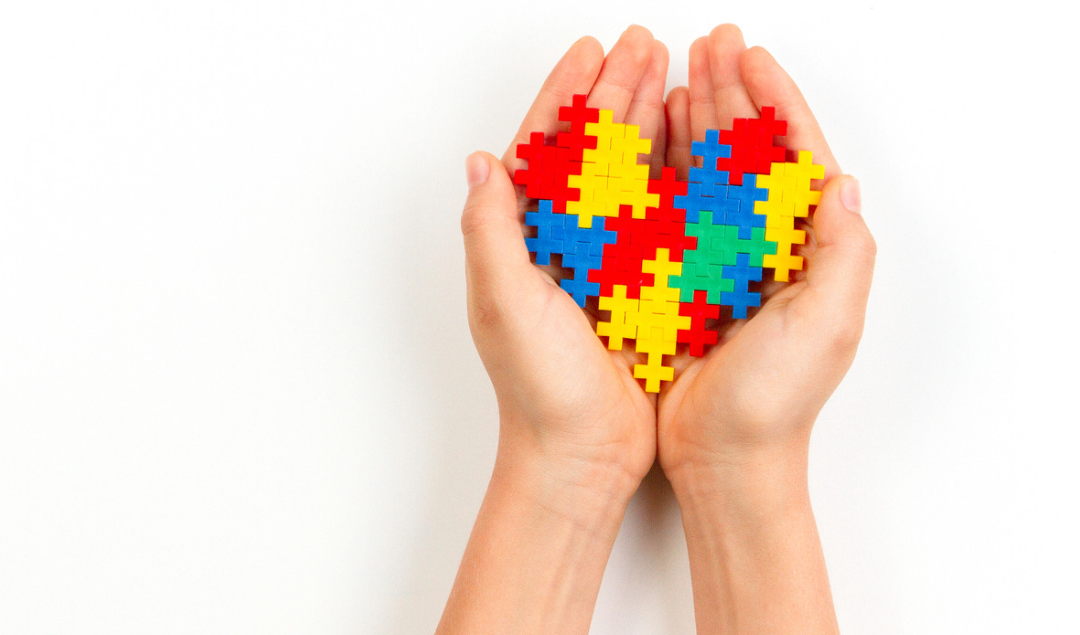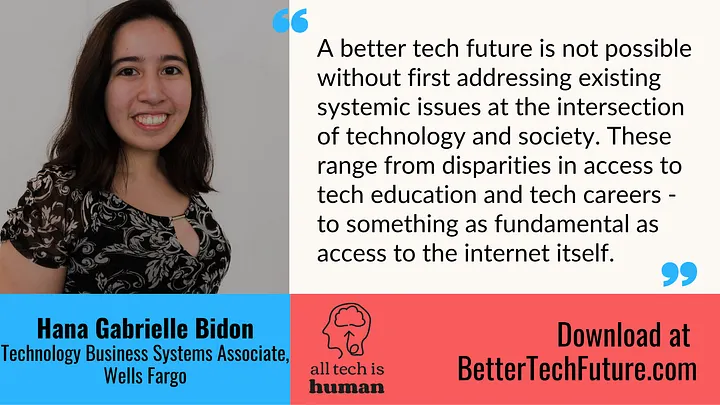Dear Tech Folk, Not All Disabilities Are Visible

This article was first posted in re:think Issue 3.
“Disabilities can be visible and/or invisible; with invisible disabilities, there aren’t noticeable signs that someone is disabled.” — Hana Gabrielle Bidon
“I was in an existential crisis when picking my major. I wanted to major in mechanical engineering when I first entered college; however, I didn’t enjoy physics, and didn’t know what to do from there.”

Seeking inspiration, Bidon tried out a variety of courses: a history class, a government class, and Introduction to Computing. While considering her new path, she also discovered she loved teaching younger students about Computer Science with the partnership of Girls Who Code (GWC) and Women in Computing at Cornell (WICC). Together, these experiences confirmed she liked computing and humanities best and showed her that she could combine her passions for tech and community support. In the fall of her sophomore year, Bidon dove into studying Information Science, Systems, and Technology in the College of Engineering and joined Women in Computing at Cornell (WICC).
Read: My Journey In Tech As Filipino-American Woman
From that launch point, Bidon went to work at an educational tech lab on campus, the Future of Learning Lab, as an undergrad researcher. There, she took part in creating a qualitative study that gave her first-hand experience with data science. With that foundation, she joined another research lab in the fall of 2019 and built on what she’d learned by analyzing mental health communities on Reddit to identify similarities and differences between conditions, which included, but were not limited to, bipolar disorder and borderline personality disorder (BPD). Shortly thereafter and during the spring semester of her junior year, the COVID-19 pandemic brought closures and challenges that inspired a new interest rooted in Information Science: Science Communication
“I had to learn how to communicate about artificial intelligence, tech ethics, and tech applications in various areas to people outside of the tech atmosphere.”
In addition, Bidon was able to meet disabled people in STEM through AccessSTEM. That was particularly eye-opening, especially since there weren’t many openly disabled people in the STEM programs at Cornell. Whether due to stigma or lack of awareness, it was hard to find disabled mentors and community on campus in computing — both in undergrad and postgrad. Furthermore, when talking about accessibility in tech, Bidon soon found herself wishing that more people would learn about invisible disabilities — which range from autism, ADHD, dyslexia, and other learning disabilities to auditory and sensory processing disorders, epilepsy, and more.
Regrettably, a lack of awareness about disability — invisible or otherwise — remains present in many STEM environments. For Bidon, this became especially challenging when dealing with Zoom University. Before the pandemic, she recounted a time when a TA yelled at her during office hours because she did not look them in the eye, which resulted in a huge meltdown. Over time, Bidon began to blame herself for not operating as efficiently as others, or for not understanding social cues in the way others expected.
“Personally, my ‘weird’ behaviors…were seen as me being lazy or weird,” Bidon recalled. “People couldn’t easily tell that I had difficulties processing auditory information.”
To overcome these roadblocks and misperceptions, Bidon took an intense interest in psychology and learning the importance of social cues. Yet, while it’s helpful to learn about body language and give more welcoming nonverbal signals, she emphasized that it’s not an option that’s entirely applicable for everyone all the time. That’s why it’s also important for people without disabilities to also learn about the social cues disabled people send, and the accommodations that can make spaces more accessible and welcoming to all.
“I hope that people with and without disabilities can collaborate with each other to make more inclusive online spaces and technologies.”
Bidon also met more peers through Rewriting the Code, and found support in groups on Facebook. She also turns to tech-enabled tools — such as the YouTube channel “How to ADHD” — for help with writing and finishing projects. These accessible supports, along with the groups that helped her engage her passions, now connect Bidon with a community of women and disabled people who are all interested in tech.



